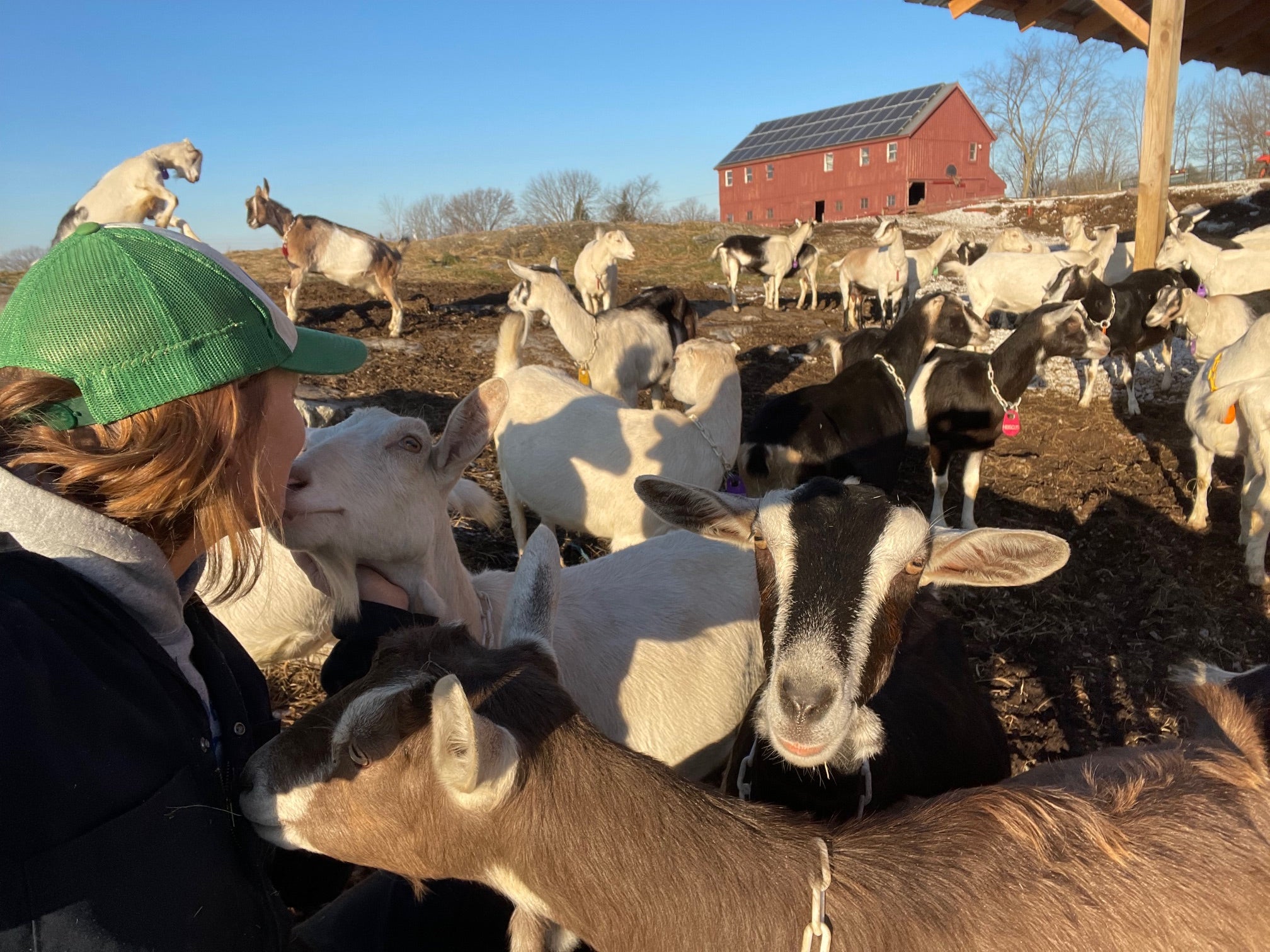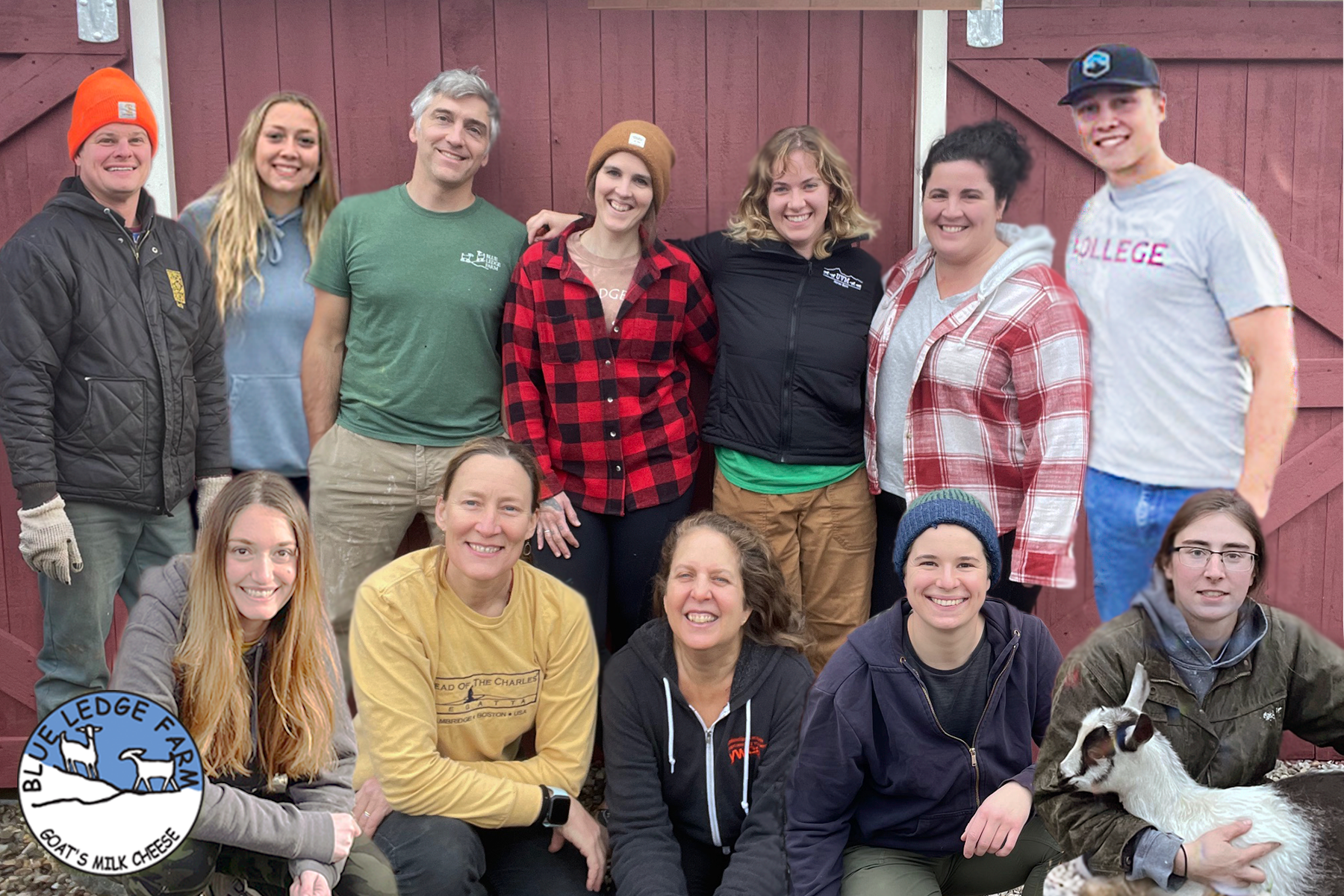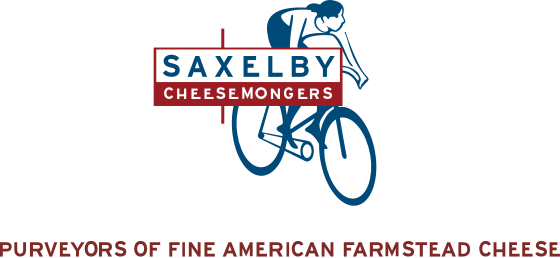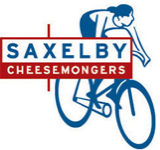
Goats love to climb. If there's a rocky surface where they can gain elevation, no matter how inaccessible, they'll figure out a way to get up there. So when Hannah Sessions and her husband Greg Bernhardt saw the blue rock ledge that stretched across the property of their future Salisbury, Vermont, farm, they knew they had found a home for their plans to make farmstead goat cheese.
And what cheese it is! Blue Ledge Farm is the maker of the melt-in-your-mouth Lake's Edge and the seductively creamy Camembrie. They also make a mighty Middlebury Blue cheese with cow's milk from the nearby Mose Farm, and an electrically lactic cow-plus-goat hybrid called Riley's 2x4 (two teats for goats, four teats for cows). All of Blue Ledge's goat's milk comes from their own herd of 130 mostly Alpine goats. A carefully controlled breeding schedule allows them to make goat's milk—normally a seasonal spring-through-fall product—throughout the year.

Sessions and Bernhardt are artists as well as farmstead cheesemakers. They met while studying art in Florence as college students, and as they fell in love with each other, they both became enamored with the agricultural traditions there that connected them to the land. Picking and pressing their own olive oil, the idea of food as an activity rather than just a product—a switch flipped, and they returned to the United States with a mission to set up a farm of their own. "25 years ago, we realized that the US was behind Europe in some ways around food," she says. "We saw the pride in local foods that each area made and how they created a sense of place." Sessions grew up in Vermont just six miles from where their farm lies today; they established Blue Ledge Farm in 2002.
In the 22 years since, Sessions and Bernhardt have become backyard scientists as well as artists. Sessions recently received a grant from the Northeast Dairy Business Innovation Center to study more sustainable ways to manage goat herds through a process called extended lactation. "The conventional wisdom when I got into farming was that you had to breed goats every year or the yield and quality of their milk would suffer," she says. Problem is, unless your cheese production and labor supply scale with the number of goats you're breeding, it doesn't take long to be overwhelmed with new kids—half of which lack the biological equipment to make milk, and must be sold to other farms as livestock. Sessions is experimenting with breeding her goats every other year, extending their lactation period from 330 days to 700 while limiting the number of new kids on the farm. She's only a year into collecting data, but the initial results are encouraging. "Production doesn't tank and the milk quality stays really good."

The couple manage what Sessions describes as a "low input herd." They selectively breed goats with natural resistance to pests such as worms, limiting their reliance on livestock pharmaceuticals. Playtime on the farm's rocky blue ledge helps keep the goats' hooves trimmed. And three areas of open woods and pasture get rotated through for grazing during the growing season, providing the goats with a diverse diet without taxing any one part of the land.
Land stewardship is a frequent topic of discussion for Sessions. Their barn was built in the 1940s and their house in 1798; she and Bernhardt are committed to keeping plenty of natural habitat on their farm. In 2004, the couple sold the development rights to their land to the Vermont Land Trust, meaning that the property will remain undeveloped farmland in perpetuity, even if sold in the future. In 2009, they set out to conserve 50 of their 150 acres as wetlands to be kept in their natural state. When Hurricane Irene tore through Vermont in 2011, those wetlands helped absorb rainwater that would otherwise have flooded into the nearby city of Middlebury.

The farm's stewardship practices extend to electricity and water use. 39 solar panels on the roof of their barn offset some of their electrical needs. A cheese cave dug into the hills is insulated from seasonal temperature swings. And a new pasteurizing vat saves 600 gallons of water by heating and cooling milk more efficiently, which in turn makes it gentler on the milk.
Sessions and Bernhardt's children are in college, and she says that as they spend more time with students from other backgrounds, the more they appreciate growing up on a farm. "They realize it's a unique way of life that they really value," she says. "A farm is a whole world."
Try Blue Ledge Farm's amazing cheeses for yourself!
Farm photos courtesy of Blue Ledge Farm, shot by Hannah Sessions and Greg Bernhardt.

